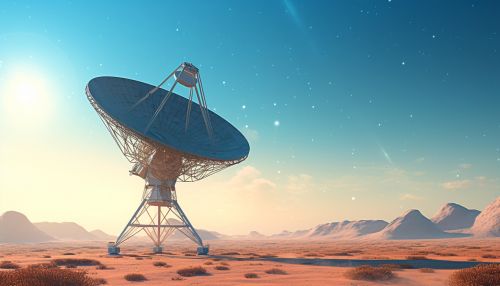Jocelyn Bell Burnell
Early Life and Education
Jocelyn Bell Burnell was born on 15 July 1943 in Lurgan, Northern Ireland. Her parents were both educated and encouraged her interest in science from an early age. Bell Burnell attended the Lurgan College, where she was not allowed to study science because she was a girl. However, her parents protested and she was allowed to study it. She then attended the Mount School in York, England, where she was inspired by her physics teacher to pursue a career in astronomy.
Bell Burnell graduated from the University of Glasgow with a Bachelor of Science degree in Natural Philosophy (Physics) in 1965. She then studied at the University of Cambridge's Cavendish Laboratory for her PhD, where she was supervised by Antony Hewish and Martin Ryle.


Discovery of Pulsars
While at Cambridge, Bell Burnell was involved in the construction of the Interplanetary Scintillation Array, a large radio telescope designed to study quasars. In 1967, she noticed a bit of "scruff" on the data chart produced by the telescope. This anomaly, which was later determined to be a rapidly rotating neutron star, was the first discovery of a pulsar.
The discovery of pulsars was a significant breakthrough in astronomy. It provided the first direct evidence for the existence of neutron stars, which had been theorized but not yet observed. The discovery also opened up new possibilities for the study of gravitation, relativity, and the properties of matter under extreme conditions.
Career and Later Life
After completing her PhD, Bell Burnell held various academic posts at the University of Southampton, University College London, and the Royal Observatory, Edinburgh. In 1991, she became the head of the physics department at the Open University. She later served as the president of the Royal Astronomical Society and the Institute of Physics.
Bell Burnell has been recognized for her contributions to astronomy with numerous awards and honors. However, she was controversially overlooked for the 1974 Nobel Prize in Physics, which was awarded to her supervisor Antony Hewish and Martin Ryle for the discovery of pulsars.
Personal Life
Bell Burnell married Martin Burnell in 1968, but the couple divorced in 1993. They have one son. Bell Burnell is a Quaker, and she has spoken of how her faith has helped her handle the challenges and disappointments in her life, including the controversy over the Nobel Prize.
Legacy and Impact
Bell Burnell's discovery of pulsars has had a profound impact on the field of astronomy. Pulsars have been used to test the theory of general relativity, study the interstellar medium, and search for gravitational waves.
Despite the Nobel Prize controversy, Bell Burnell has been widely recognized for her contributions to science. In 2018, she was awarded the Special Breakthrough Prize in Fundamental Physics. She donated the entire prize money to the Institute of Physics to fund scholarships for underrepresented students in physics.
